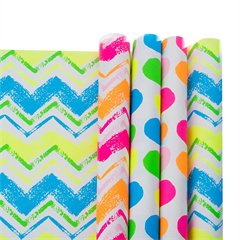There are many methods of carton production, and after continuous streamlining and improvement, a large number of carton production processes have been eliminated. At present, the more popular production process also has excellent differences, let’s talk about a better carton production process!
First step, first purchase base paper and corrugated paper. The carton is made of cardboard. Everyone knows how it is made? Combine the base paper and corrugated paper with a machine. Some factories have strong production capacity, and they can also directly purchase wood to produce raw paper, which is the kind of large kraft paper roll. The general carton factory purchases cardboard directly to make the carton, and the secondary carton factory processes the cardboard by itself, saving costs.
The second step is to make cardboard as required. Why do you want to make it as required? The base paper is also divided into good and bad, the grammage is different, of course, the direct distinction is based on the price. Corrugated paper is also divided into three types: A, B, and C. Corrugated paper refers to the wave-like paper sandwiched between the kraft paper, with high corrugation and low corrugation. At the same time, the carton has three layers and five layers. Three layers means one layer of corrugated paper, and five layers means two layers of corrugated paper.
The third step is to calculate the area and price after the customer places the order. Let’s take an ordinary carton as an example. As long as you know the length, width and height of the carton, you can calculate the area, but when calculating the total length, you need to calculate an extra glued part of 2-3 cm. This depends on it. Requirements within the company. 【(Length+Width)*2+30】*Height*Price per square meter. The high here refers to the entire height of the carton, including the height of the top and bottom flaps. This is the selling price.
The fourth step is to make a rubber template according to the drawings. Carton boxes generally have printing requirements, so they must be attached with drawings, and the color and customer requirements must be indicated on the drawings. Then the rubber plate will be made by the staff of the plate room as required. Generally, ink printing is relatively simple, and the fonts and colors are not as complicated as offset printing, and they are very simple. This rubber plate is very important and a must for printing.
The fifth step is to prepare the ink and debug the machine, and you can start printing on the machine. Put the template on the machine and confirm the length and width dimensions. First, take out a few sheets to see the effect. One is to see if the size is correct, and the other is to see if the printing effect is satisfactory.
The sixth step is also a very important step, carton forming. That is, workers glue the cartons or nail the cartons to shape the cartons. The reason why the extra 2-3 cm was reserved before was the key to carton forming. If it is glued, it should not be too big or less when it is glued. If it is too much, it will stick to the surface of other cartons. If it is too little, it will not stick.
The next step is to pack. After the carton is formed, depending on the size of the carton, tie it with packing straps in a bundle of 5 or 10 and set it aside. Now there are automatic or semi-automatic packing machines for packing, which can be said to be simple and convenient. Now everyone should know the production process of cartons. Is it very simple?
















